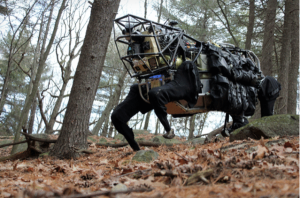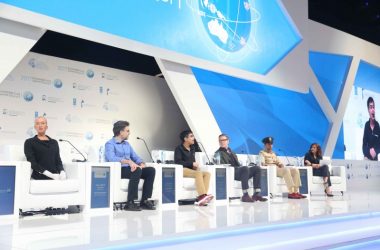 For as much as Google is known for today, it’s easy to forget that it’s also the force behind a hefty number of research projects. Those projects have led to things like wearables and self-driving cars, but the latest news gives a clear idea of where it’s going next.
For as much as Google is known for today, it’s easy to forget that it’s also the force behind a hefty number of research projects. Those projects have led to things like wearables and self-driving cars, but the latest news gives a clear idea of where it’s going next.
Over the weekend, Google acquired the robotics engineering company Boston Dynamics, which is best known for its robots that mimic the movements of both humans and animals. This is the eighth robotics company that Google has brought on board in the past six months alone.
Yesterday, the New York Times reported that Google recently poached Microsoft engineer and software designer Blaise Agüera y Arcas. Agüera y Arcas was primarily involved in developing projects at Microsoft related to augmented reality, wearable computing, and natural user interfaces, which is right up Google’s alley.
Agüera y Arcas was hired by Microsoft after his company, Seadragon, was bought out by Redmond in 2006. Seadragon later paved the way for technologies like Photosynth, Microsoft’s service for creating 3D panoramas, available as both a desktop and mobile app for Windows and iOS. Google currently offers a similar service called Photo Sphere, which the company utilises for 360-degree imagery in its Maps application.
According to a source familiar with the matter, Agüera y Arcas has accepted an offer with Google, but his position at the company is still unknown. Based on his past work history, it’s likely that Agüera y Arcas was hired on for his advanced mapping expertise. At Microsoft, he was responsible for experiments that involved tacking on a camera to moving objects like bicycles and quadcopters to map routes. He was also a huge evangelist for advancing mapping technology beyond the satellite and street view that he now considers a novelty. “When you take the map as an app and you apply some sugar on top via more pixels or more imagery–that in itself doesn’t make the map many times more useful than it was,” He told Fast Company.
Similarly, the New York Times writes that Agüera y Arcas was hired to work on machine learning at Google, according to its anonymous sources. That leads us to speculate that he could be tweaking the way that machines learn from data. It sounds awfully similar to the type of tweaking that works in conjunction with the machines from Boston Dynamics. In a white paper about its rough-terrain quadruped robot, aptly named BigDog, the team wrote that the machine “would be smart enough to negotiate terrain with a minimum of human guidance and intervention.” What better way to facilitate that than with mapping software that could help the robot connect the dots on its own?
The speculation around Agüera y Arcas’ new position is endless. With all the projects that Google has going on, anything is possible. But the company is making a particularly huge push for its mapping technology, which – pardon the pun – helped put the company on the map in the first place. Google is constantly pursuing technologies that are meant to help expand that data set, too, like the underwater mapping project. While we likely won’t see anything come to fruition until sometime next year, we expect plenty on the horizon from Google’s labs.





